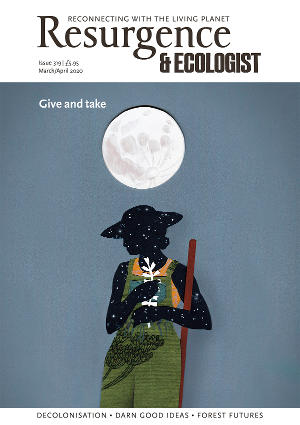As global harvests face threats from climate change, pollinator decline and water shortages, they simultaneously must grow to feed a swelling population. Faced with these perils, can the food industry cope, and if so, how? This is the question journalist Amanda Little sets out to answer in her compelling book The Fate of Food.
The story begins at the Wise Company in Salt Lake City, where “survival food” – bought by people fearing increasing environmental threats and shrinking government safety nets – is manufactured. Little is reminded of Willy Wonka’s factory as machines create all-in-one meals designed to simulate home-cooked food when combined with hot water. It is the “food equivalent of a first-aid kit”, she is told. “I, like most of us,” she writes, “love food too much to accept a future of freeze-dried chicken pot pie,” but she adds, “Innovation and ignorance got us into the mess we’ve made of our food system, and innovation combined with good judgment can get us out of it.”
Over the next 300-odd pages, Little travels the world to identify the innovations under development to fill the plates of humankind. In California, scientists are growing meat in a laboratory using tiny samples of muscle, fat and connective tissue from living animals; in the fields of Kenya, farmers are planting the country’s first genetically modified maize; and inside the water networks of Israel, sensors detect leaks way before water loss becomes serious. A recurring theme of the book is that many emerging solutions blend new technology with more traditional methods. For example, at a fish farm in Norway, robot lasers are working alongside ‘cleaner fish’ to keep lice populations at bay. The cleaner fish are better at eating lice hiding under gills, while the robots can target the colourless baby lice the cleaner fish cannot see.
Chris and Annie Newman from Virginia, in Little’s opinion, offer an authentic synthesis of third way agriculture. They farm using permaculture principles combined with smart technologies, creating a food-rich forest ecosystem that will eventually be managed and tended by intelligent machines. It is a vision where technology serves and elevates Nature, and one the Newmans follow with “revolutionary fervour”. Use of such new technology is not without controversy. Little notes a rift between the “deinvention camp”, who advocate a return to pre-industrial, organic and biodynamic farming practices, and the “reinvention camp”, who believe technology is key to producing the amount of food necessary for the world’s expanding population.
Little’s stories paint engaging pictures of the motivations behind the food innovators she meets. For example, Ed Harwood frequented a fabric store in New York for several months, endlessly wandering the aisles and telling bemused store assistants only that he would know what he wanted when he found it. What he eventually discovered was a type of cloth he could “trick a seed into thinking was soil”, so that he could grow baby greens using aeroponics, a type of indoor farming.
Little ends on a hopeful note, reporting that she had to let go of her own preconceptions about gene-edited foods, farmed fish and petri-dish meats, concluding that even fast food had the potential to change for the better. But in order to get there, she asserts, the world needs Nature and technology working in harmony. “We’ll need to push the bounds of technology with a better understanding of where it has failed us. We must innovate – with humility,” she says.







